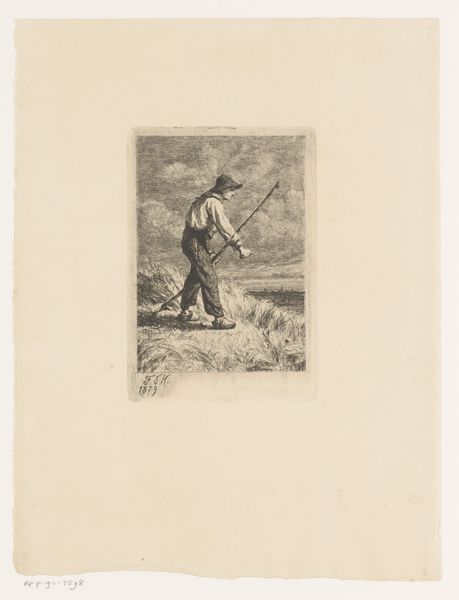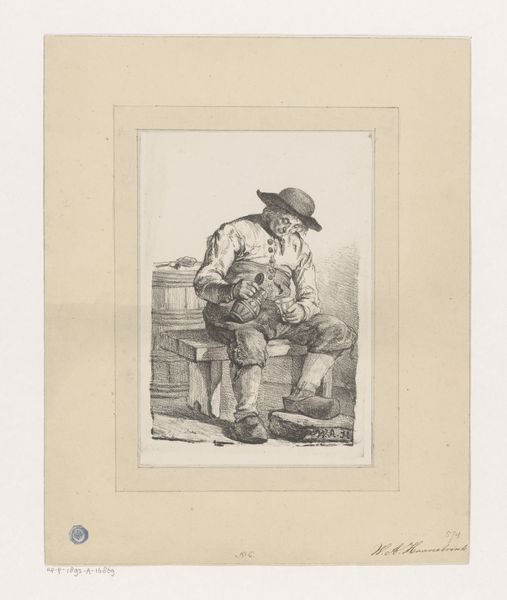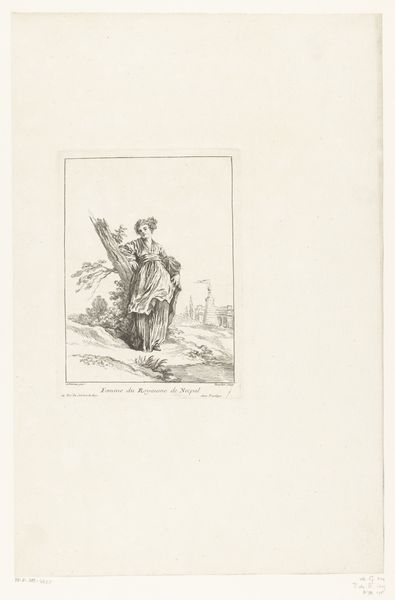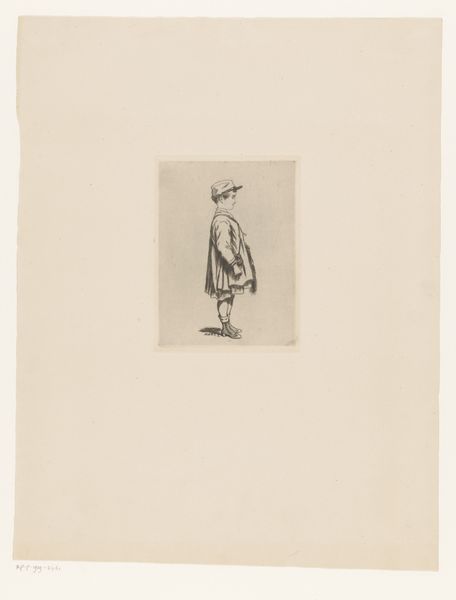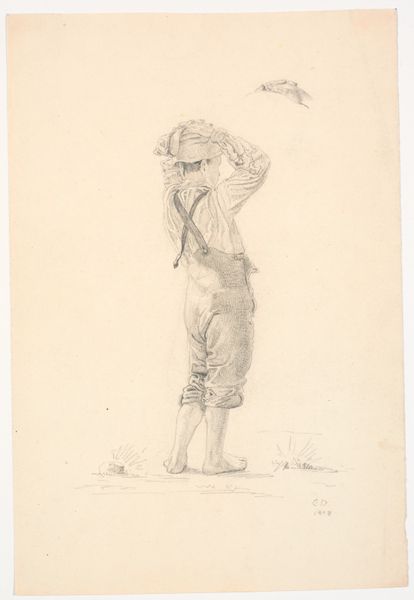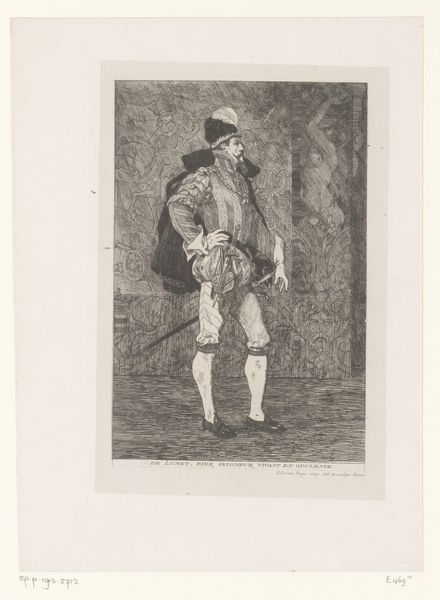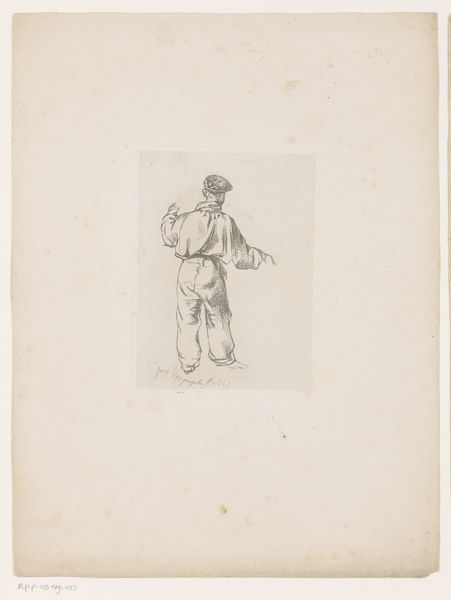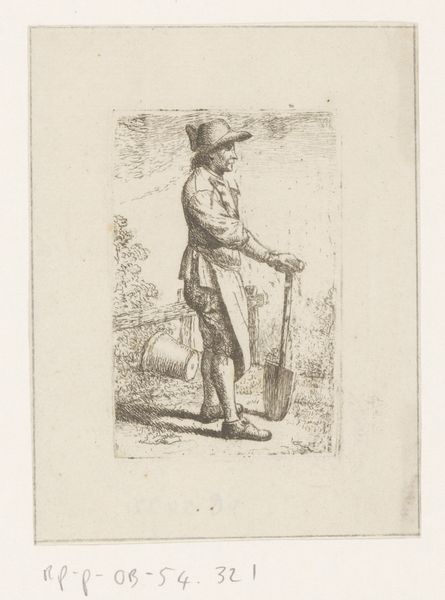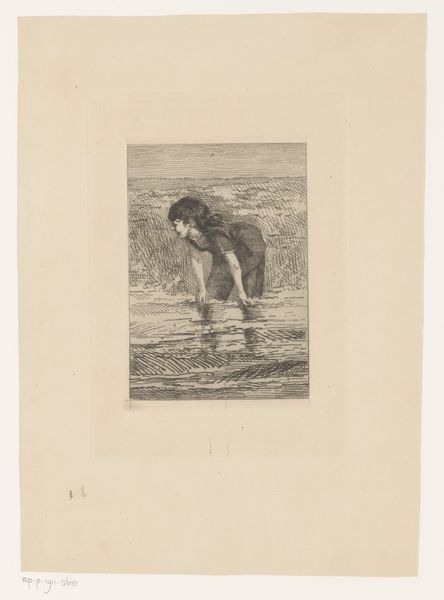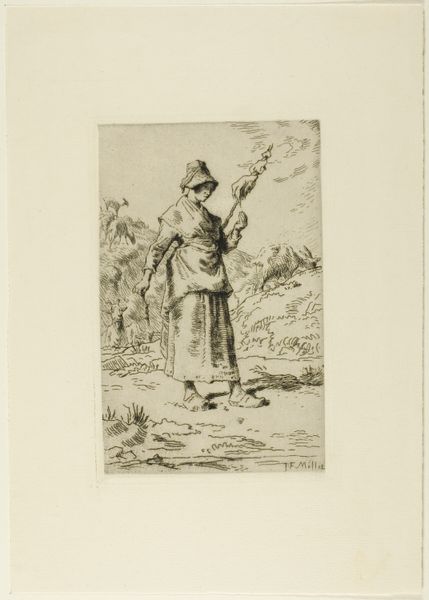
print, engraving
# print
#
old engraving style
#
landscape
#
figuration
#
engraving
#
realism
Dimensions: height 128 mm, width 80 mm
Copyright: Rijks Museum: Open Domain
Curator: Standing before us, we have Louis Jaugey's "Man op het strand blaast op een hoorn", dating to between 1850 and 1899, a print crafted with meticulous engraving. What are your initial thoughts? Editor: It’s got a forlorn kind of heroism about it, doesn't it? He's like a lone seagull in a hat, trying to get someone’s attention on the high seas. Is he a lifeguard summoning help? Or maybe just really wants those ships to come closer for a chat. Curator: The image certainly has an enigmatic quality. Its realist style captures the man in his quotidian setting. However, beyond the surface, the work engages with prevalent 19th-century concerns. The seaside during this period wasn't just for leisure; it was also a place of work, risk, and of course, maritime trade. Editor: Right, you see the realism, and I get lost in the mystery of it all! I mean, that horn looks more like he is announcing teatime on a very grey beach. And is that some sort of fancy walking stick he is lugging around? A bit overdressed for a casual beach day! Curator: Well, it also invites us to reflect on the role of communication and signal, the lifeline to connection and community against the backdrop of the sea's formidable power. Editor: Communication then was about the shout, the physical act of being heard—the complete opposite of our digital world, where a simple text gets lost among thousands of other ones. I bet our horn-blowing friend didn’t have to worry about being ghosted! Curator: That's a pertinent connection, as the work subtly prompts reflections on change. How our relationships with our environments and with each other shift across time and with evolving technologies. Editor: So, instead of focusing on social status or economic class, this is a meditation on isolation and a shout-out for someone to simply... answer the darn horn? Curator: Indeed, but framed within broader social considerations concerning the sea's importance to trade, defense, and culture during this period. Editor: The best art always whispers more than it says, and it looks like Jaugey's captured one of those murmurs. Curator: Very true. His image serves not just as documentation, but as an artistic commentary on communication, then, now, and perhaps tomorrow.
Comments
No comments
Be the first to comment and join the conversation on the ultimate creative platform.
